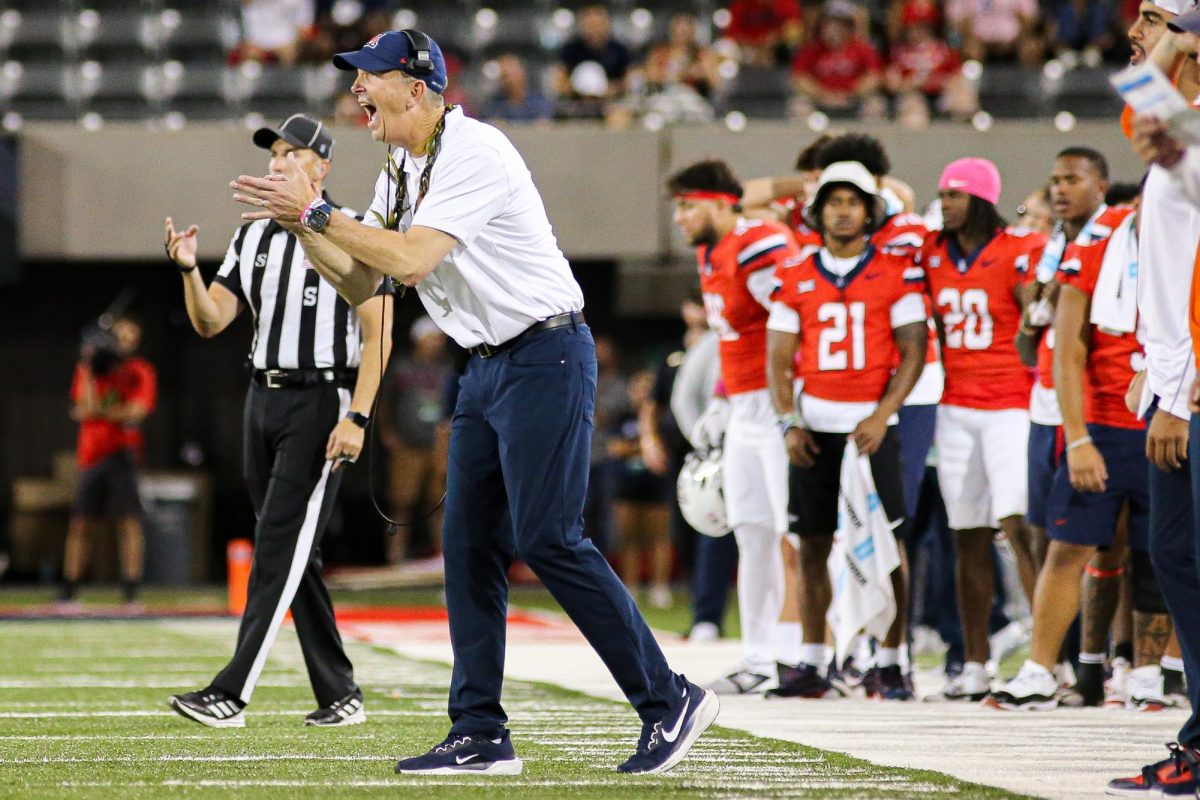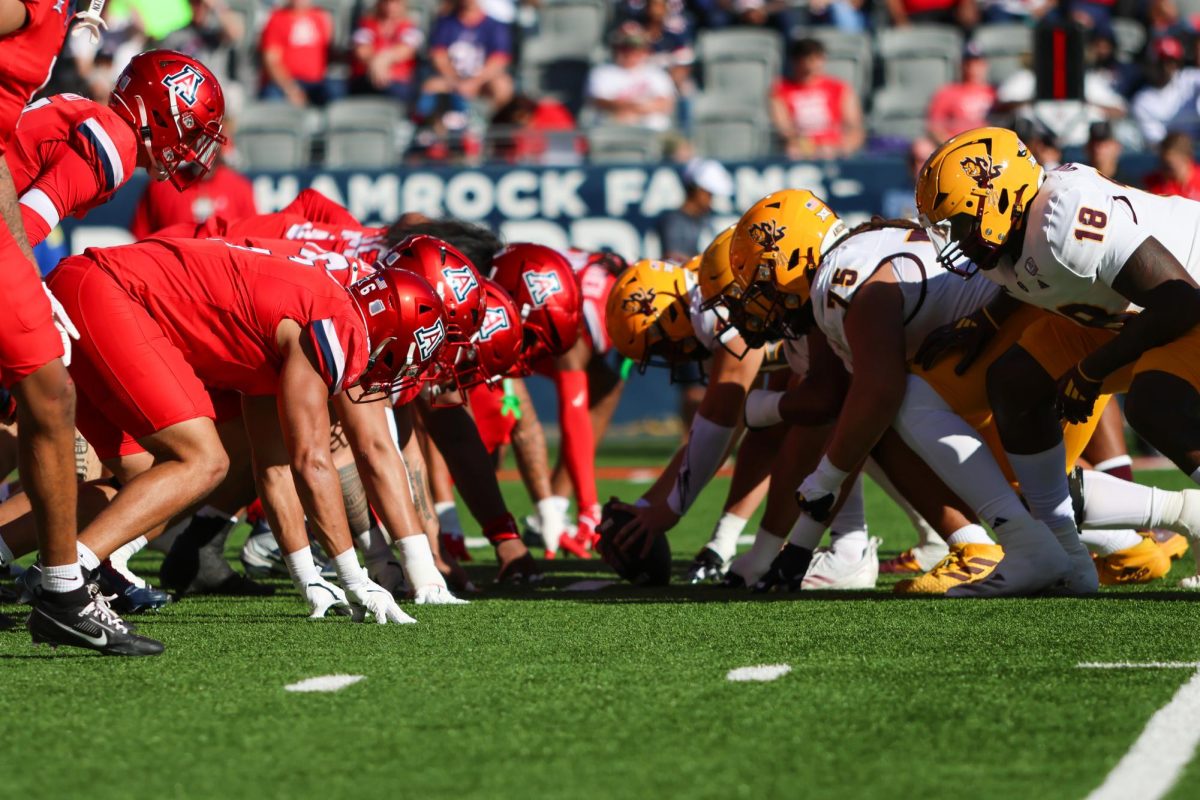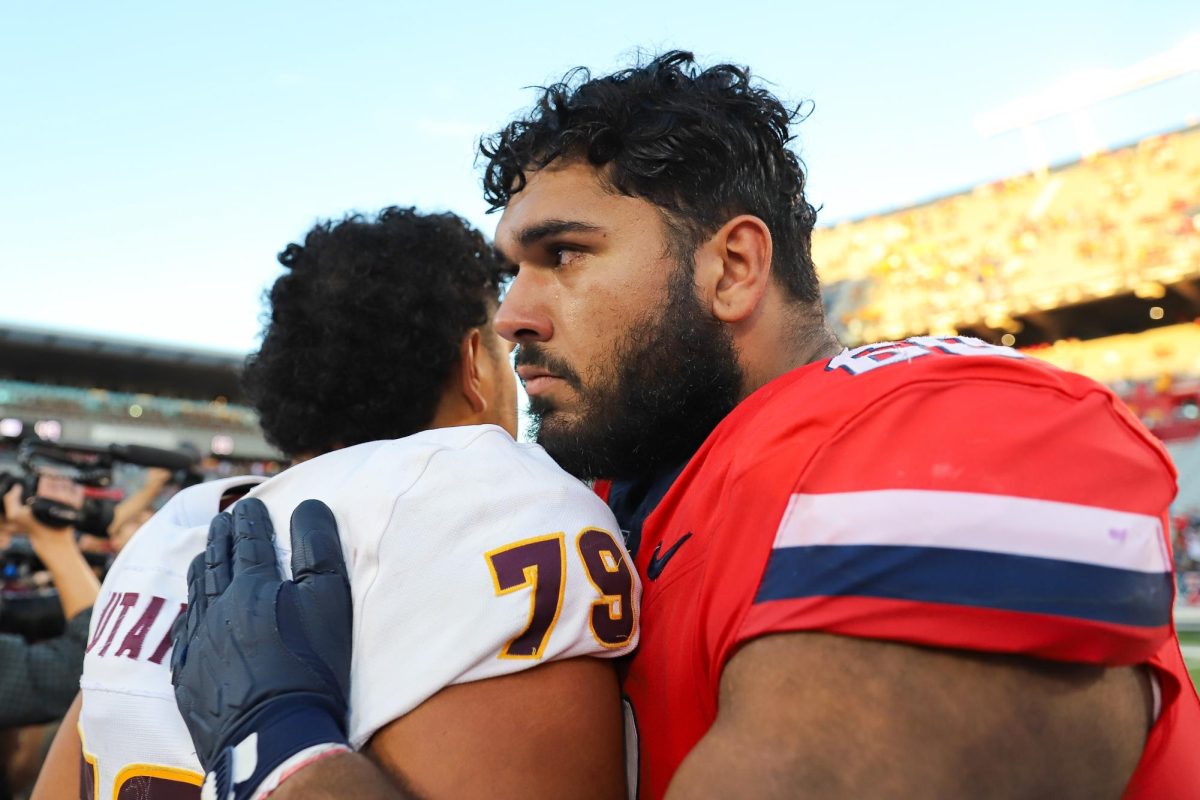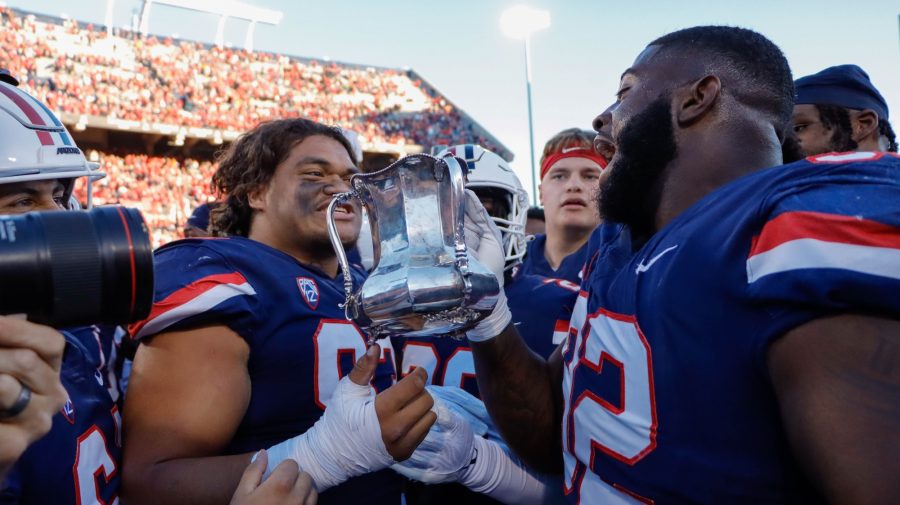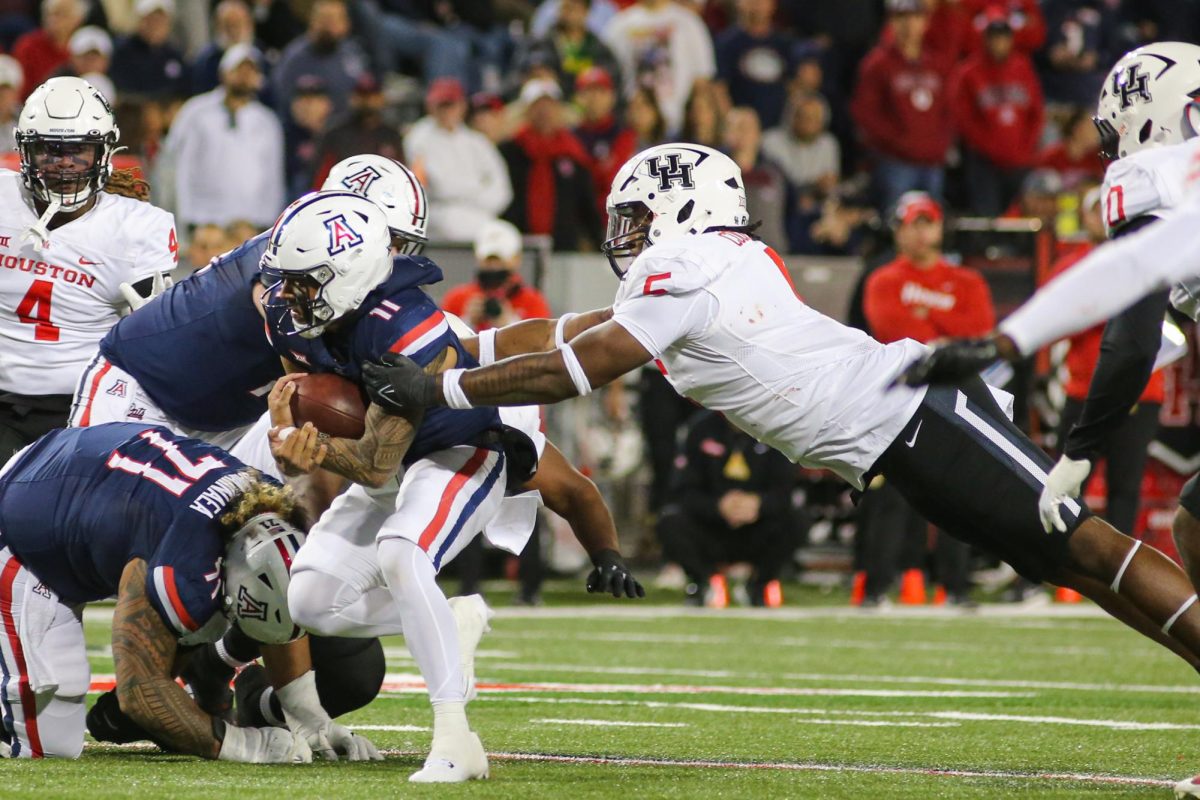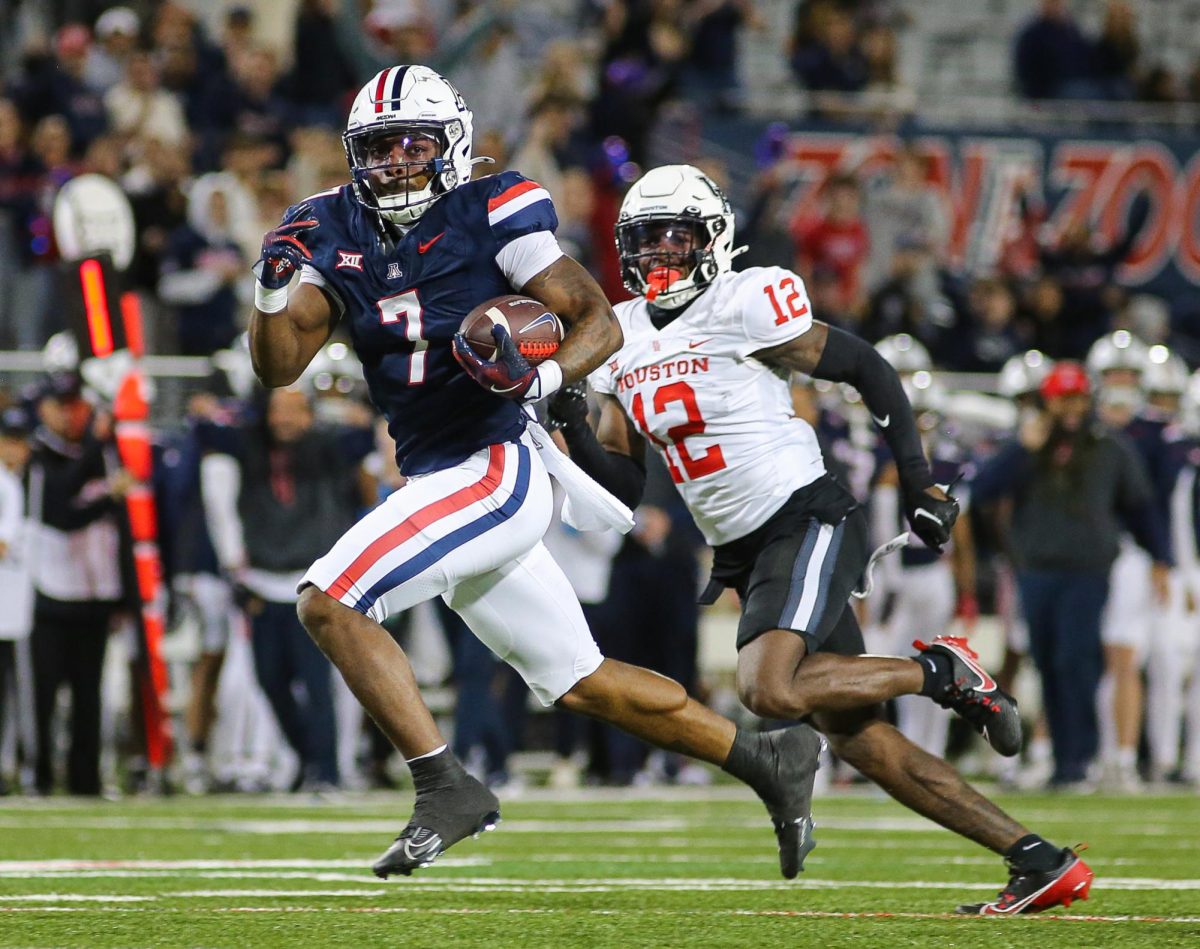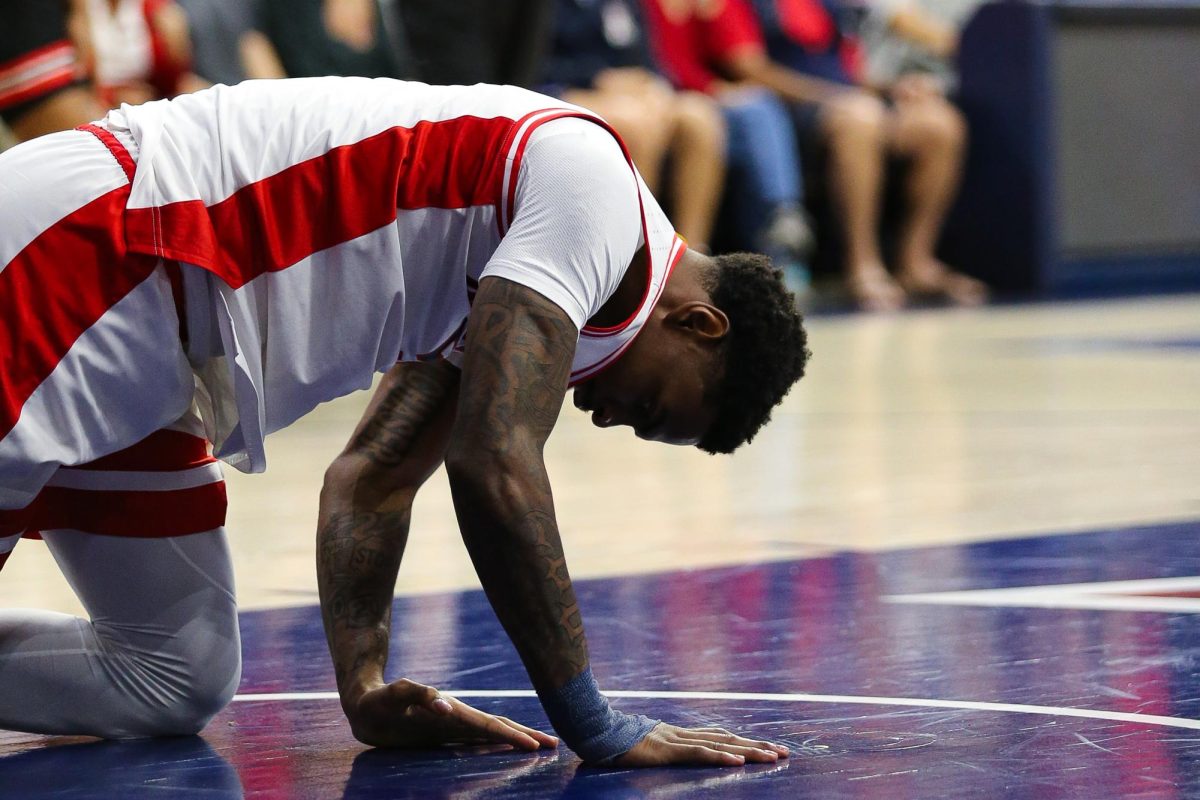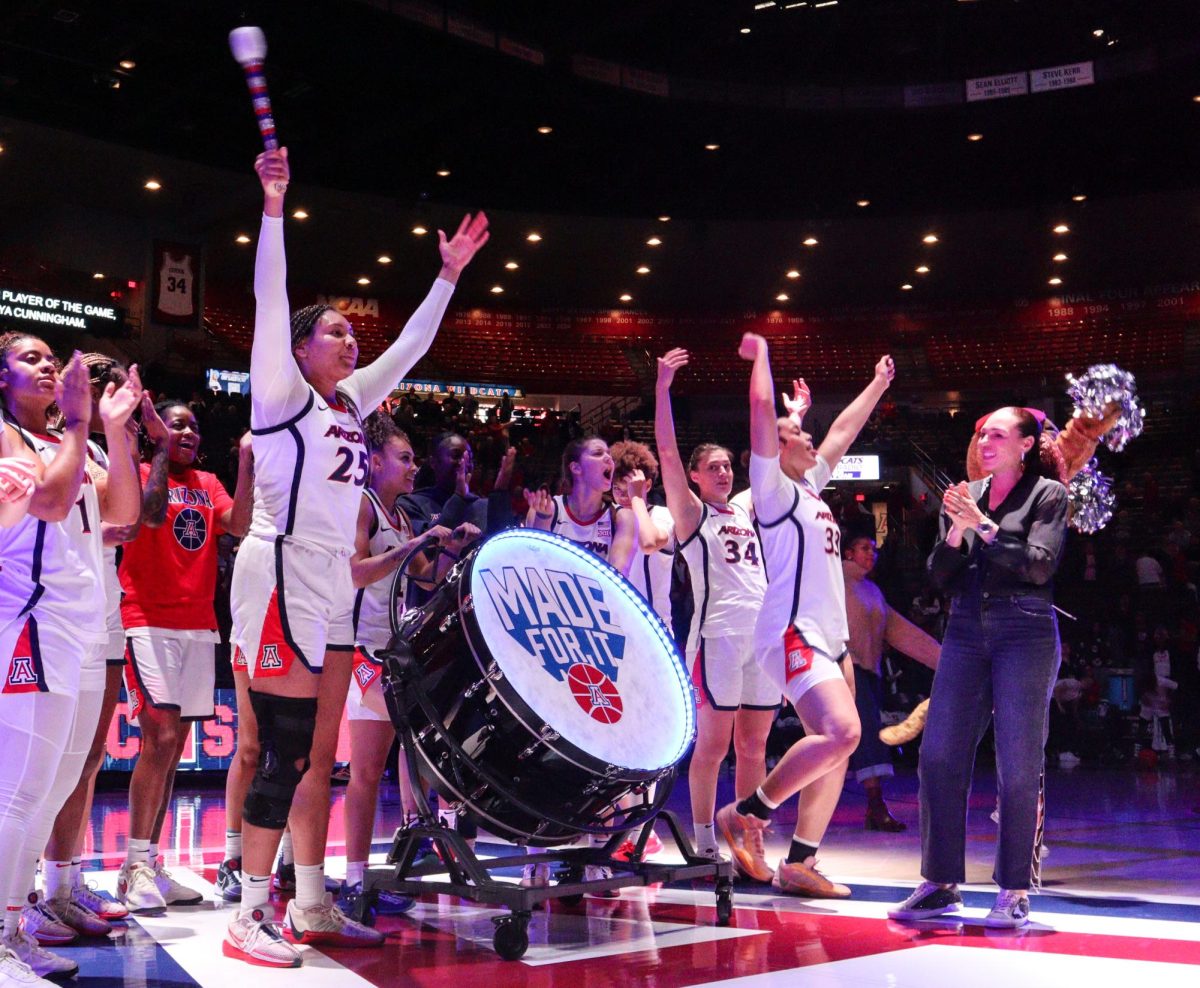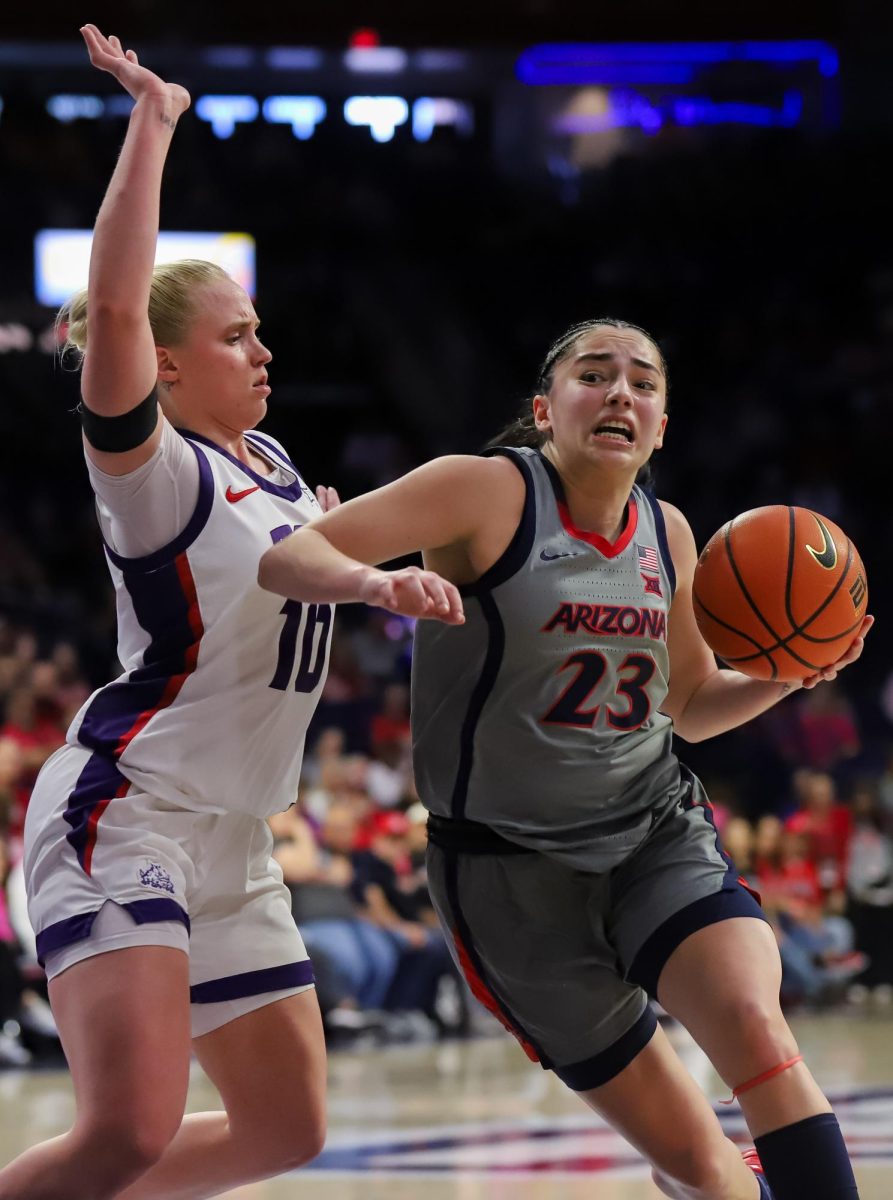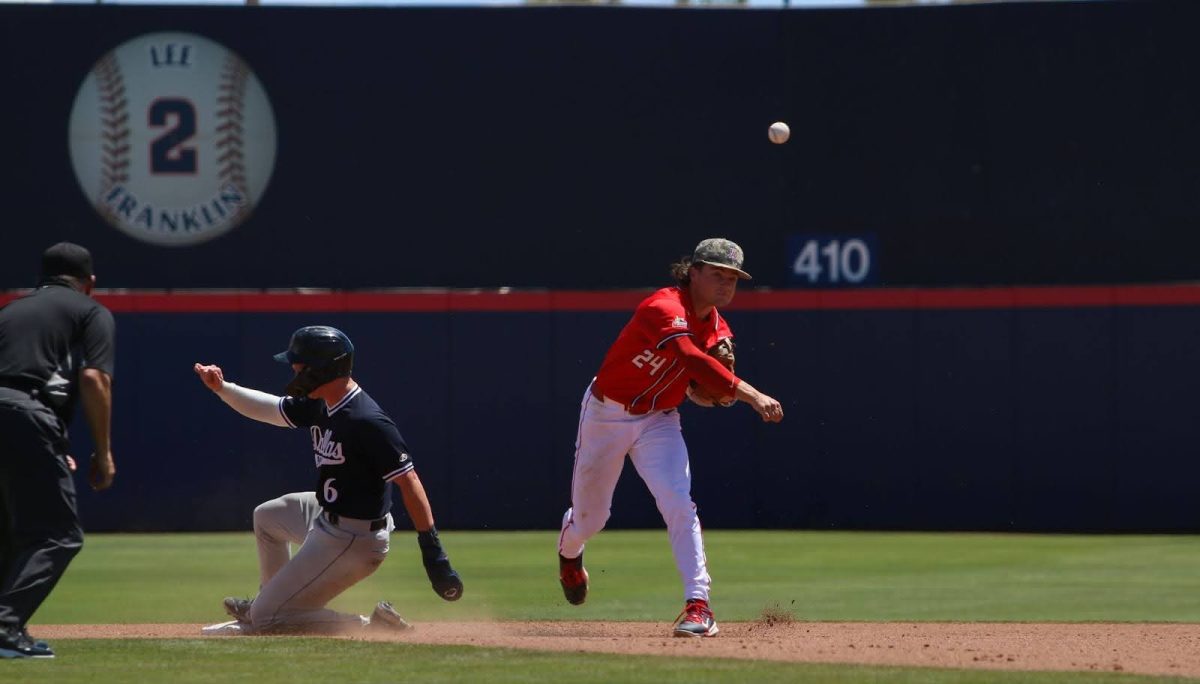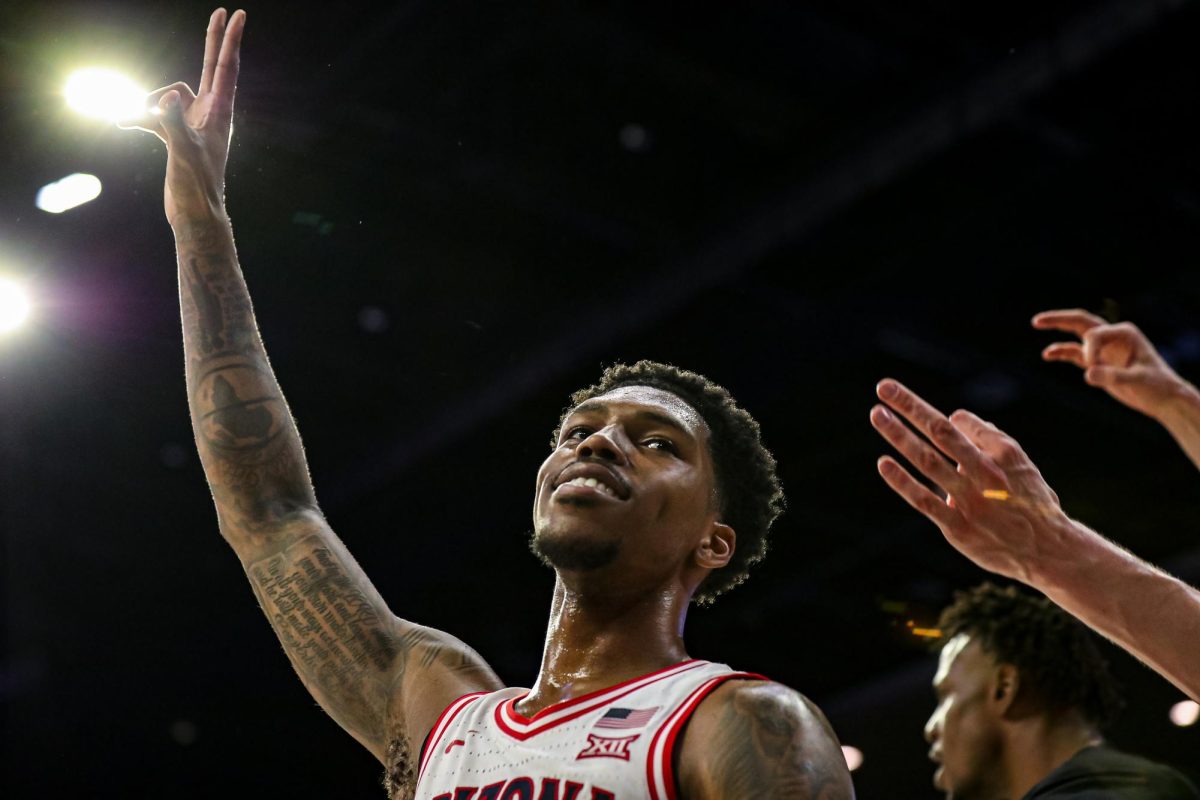Spring practices are now over for Arizona football, but one final event still looms on the horizon— the opening of the Lowell-Stevens Football Facility. Before the Wildcats’ spring game, Athletic Director Greg Byrne met with reporters to talk about the North Endzone Project and other stadium developments for Arizona athletics.
Daily Wildcat: Is everything on track for the Lowell-Stevens Football Facility?
Greg Byrne: “The players are going to start moving in over the month of July. Just like when you move into a new house I’m sure there will be a punch list of things to address. Then on top of that, the field turf [CoolPlay] is moving along too. As the ground has been leveled and centered.
We’ve got new goal posts that when you push the button, they collapse. So we’re preparing for success. When we beat the [Sun] Devils to go to Pasadena, we’ll just push the button and the goal posts will fall down.”
What do the new additions mean for Arizona football?
“Think about it now from a student athlete perspective. We’ll have academic support over at the McKale Center, but from a training, weight room, meeting, there’s going to be a player’s lounge in there, a cafeteria. They’ll have everything throughout there day at these two locations and then going to class on campus.
So from an efficiency standpoint, when you have a young man coming to our program, we’ll be able to tell mom, dad, aunts, uncles, whoever it is that nobody’s going to have a better set-up that will help them manage their time, give them a better chance to graduate, give them a better chance to develop as a football player and an athlete. That’s really good for us.
Any young man or any young woman we recruit to Arizona, they’re going to have aspirations beyond Arizona. Whether it’s the professional leagues, for a national team or an Olympic team, and they’re going to want to be recruited to and train in the best possible conditions they can. This helps solidify that for us going forward that if you come to Arizona, you’re not taking a backseat to anybody.”
Any unforeseen obstacles or concerns with the Lowell-Stevens project?
“Any time you have a construction process, there is going to be some times where you’re behind and times when you’re ahead. So there’s been the normal ebb and flow throughout the construction process, but we’re on schedule to be on time.”
Why did football need an upgrade like this?
“The amenities that go along with it are very much going to modernize Arizona football. And, for so many years that was an Achilles’ heel for us. Now we’re going to be able to look at all of our recruits and say, ‘You’re going to be able to come here and have the same experience that you would any place else.’ That, on top of all the strengths we already have for Arizona.
It was interesting when Alabama, a couple months ago, unveiled its new weight room for football, and I saw the pictures of it online. I was like, ‘Gosh darn, that looks just like what we’re building.’ It’s going to be a wonderful thing.”
Is this the last thing on drawing board for football?
“We still have to address the rest of Arizona Stadium. In the next few years is this the last thing for a while? Probably. They’ll be small things that we do every year to continue to improve our program. But we have to address concessions, restrooms and the rest of Arizona Stadium.
This will be the biggest project for a few years, but literally we still could have over $100 million worth of improvements that we would need to do to Arizona Stadium. As I tell our coaches all the time, it’s the ideas that are the hard part, the money is the easy part.
What’s the next step?
“The next step is that the project is going to open up a bunch of space for us in the McKale Center. We’re probably in the next week to 10 days going to officially be naming who our architect is for the renovation of McKale, we’ll be hiring a general contractor soon after. We’re actively raising money for it, we’re already into the low eight figures on gifts.
But, [Lowell-Stevens] was the first step that had to take place and now we’re going to be able to continue our master plan with our facilities and modernizing everything that we’re doing. And make sure we’re able to compete for many more years to come in every angle, including facilities.”
Any plans for improving Hillenbrand?
“Coach [Mike] Candrea has a lot of plans for Hillenbrand, as he should. But, in all seriousness, it’s showing its age. Our softball program has been an important part of our universities history and we need to make sure we can ensure long term success.
Oregon State in 1989, they were the second-winningest men’s basketball program of all-time in the college ranks. And they’ve struggled a little bit [since]. You have to look at yourself because if that can happen there … Oregon State is a great program, a great university, but at the same time you have to make sure you reinvest in your success. That’s what we’re trying to do.”
What’s happening to Bear Down Field?
“Bear Down Field will go back to the students, but we’re field turfing that as well. If you think about it, three to four months of the year that grass is brown. We’re building this really nice facility right there, we want to have a good front porch for it.”
What about Jimenez Practice Facility now that Arizona Stadium will have turf?
“There is a good chance we’re going to put sand volleyball on part of it. The rest of it, we have a few ideas but really don’t know what direction we’re going to go with it.”
Any plans for improving the visitor’s locker room at Arizona Stadium?
“That’s one of the nicest ones there is in the Pac-12, I think its ranked 12th out of 12, can’t do much better than that, right? We’ve talked about putting the visitors into where our [old] locker room was, we haven’t decided for sure. Coach Rodriguez and I probably need to talk about that one a little bit more.”



